Using the Leica SL (Typ 601)
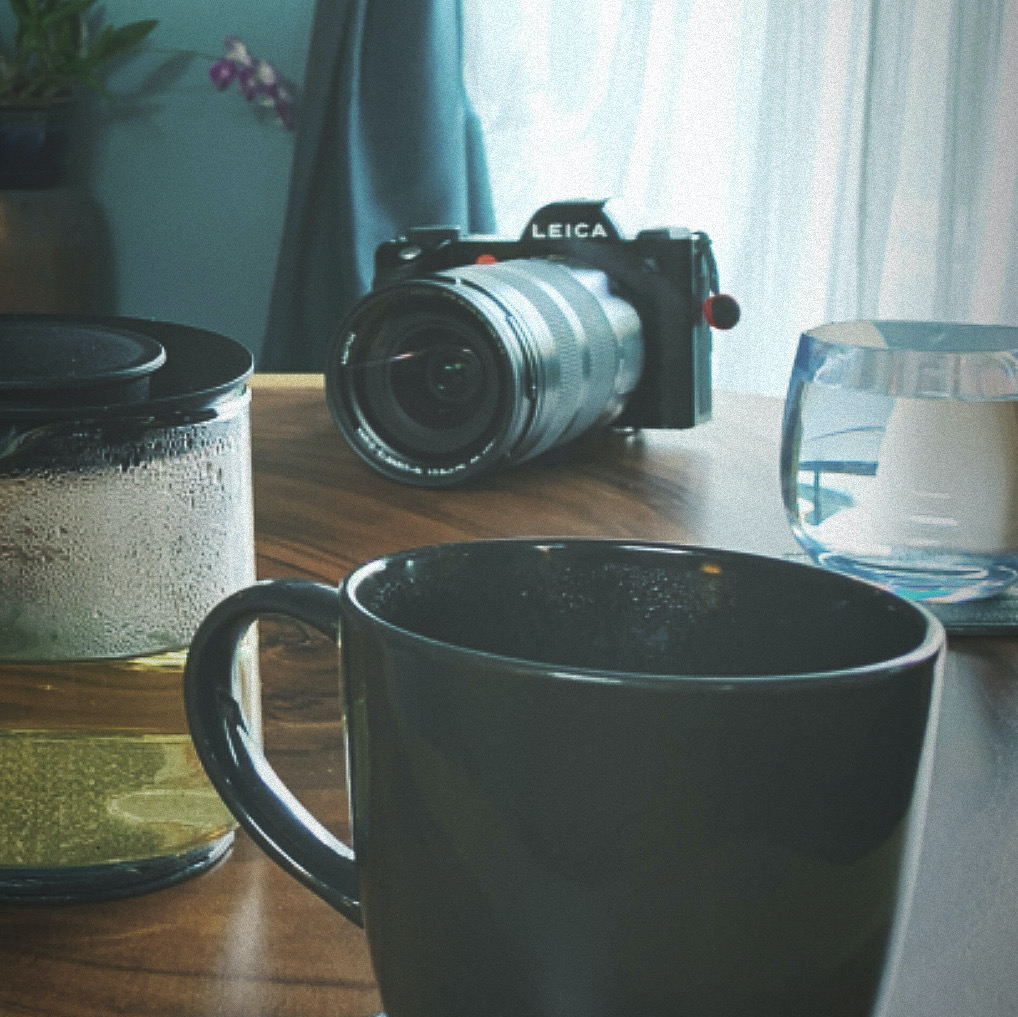
The Leica SL (Typ 601) is a 24 megapixel full-frame mirrorless interchangeable-lens camera introduced by Leica in October 2015. It is a L-mount camera that natively supports both SL and TL lenses from Leica as well as any L-mount lenses from other vendors of the L-Mount Alliance (Leica, Sigma, Panasonic). Also, it supports literally all Leica lenses ever made through use of adapters for M-Mount, R-Mount, S-Mount and even Leica CINE lenses. More importantly, it is Leica’s first full-frame mirrorless system with autofocus and promoted as a weather sealed camera system for professional applications.
As in late 2019, Leica introduced its successor, the Leica SL2, with some significant but two folded improvements (5-axis image stabilisation, higher resolution of 47 megapixels, up to 5.5EV of compensation, improved viewfinder, improved grip, USB Type C connector etc.), I thought it was time to write up my reflections on using the Leica SL (Typ 601).
A New World
At the time and to some degree even today, the SL felt like a new world within the Leica ecosystem that addressed many needs of professional photographers and somewhat represented a natural evolution of the R-System (Leica’s discontinued analog SLR series), at least on a conceptual level. As Leica never entered the DSLR market (apart from the digital module for the Leica R8 and R9 called DMR, making the R system the only hybrid analog digital SLR system that ever existed), the SL felt like a step into that direction, but with a modern and long term perspective in mind.
“The Leica SL system marks the beginning of a new era of professional photography made in Germany. The Leica SL mirrorless system camera is impressive on account of its innovations in exceptional Leica quality.”
Source: Leica Camera AG
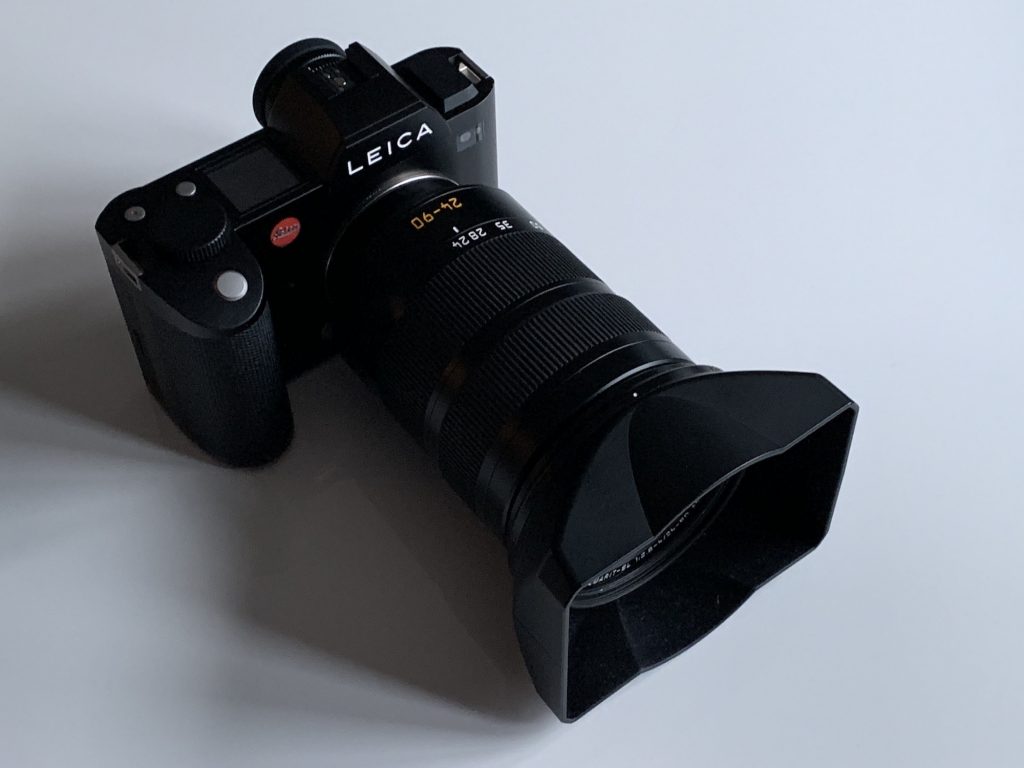
Most interestingly, the new camera system also spawned a new generation of lens design that was presented as basically future proof, supporting up to 100 megapixels as Peter Karbe, Leica’s director of optics development, casually dropped in an interview with Thorsten Overgaard:
Overgaard: “So, I have an interesting questions here: If you look at the Leica SL lens or the Leica TL lenses, how high up can you go in megapixels before you must say ’Okay, now we have to improve the lens design again’ … Have you made any predictions for that?”
Karbe: “Yes of course. For the Leica SL, it’s 100 megapixels.”
Overgaard: “100 megapixels?
Karbe: “Yeah. No problem.”
Source: Interview with lens designer Peter Karbe
Leica SL (Typ 601) in 2020
Even though I believe that 24 megapixel are more than enough even for professional applications (apart from medium format photography for fashion etc.), it was an interesting revelation that the new lens system would take a similar approach as the M system, where literally every lens ever made is still good to go on the latest M-system cameras. As higher resolutions, such as 47 megapixels on the Leica SL2 or M10 Monochrome, come at the cost of more noise in higher ISO images, I believe that 24 megapixel will remain an established standard for quite some time.
Especially since I mostly do available light photography, low light performance is a key factor for me, resulting in the Leica SL outperforming the SL2 in this regard in my opinion. This is why, even though tempting on other levels, the SL2 did not convince me to upgrade from the SL right away. Also, the SL2 no longer has a GPS module, which might be a ridiculous feature for many but was certainly a super nice thing to have in my opinion. All things considered, I am convinced that the SL is still a super solid choice in 2020 and with the new model shaking up the used camera market, now might be as good a time as any to get one.
Leica SL EyeRes ViewFinder
As I have always been sceptic about electronic viewfinders, I was and still am most impressed with the EVF on the Leica SL. It offers 0.8x magnification with an incredible amount of 4.4 million dots. Even though now surpassed by Panasonic S1 or Leica SL2, I felt that this was the best electronic viewfinder I have ever used and despite the SLs age, it is still among the best even today in my opinion. In fact, for me it was the only electronic viewfinder that didn’t feel like a considerable setback compared to optical viewfinders. Resolution, angle of view and the refresh rate of the viewfinder should exceed the human eye’s ability and for sure it was enough for me to feel like a natural way of looking at the scene through the lens.
With nice features such as focus peaking, the viewfinder is a joy to use and allowed for very precise focussing even when using manual focus lenses with wide open apertures and very shallow depth of field. In fact, I am certain that for some lenses the SL (or the SL2 for that matter) might be one of the best ways to focus at open apertures, as this can become a tedious and error prone procedure even with f1.4 Summilux but more likely with Noctilux lenses of f1.2 or even f0.95 on the Leica M system.
In my opinion, the only cameras with better EVFs are the Panasonic S1 and Leica SL2, which share a lot of similar technology due to the long standing partnership between Leica and Panasonic. Still, I never missed anything on the SL viewfinder, so it is perfectly fine for any use case.
Leica L-Mount
Since lens options were a bit limited at the beginning, the most prominent lens certainly was the Leica Vario-Elmarit-SL 1:2.8-4/24-90 ASPH, the systems equivalent to a standard zoom lens that was introduced with the camera back in 2015. In fact, it was the only lens available at the time the camera was released. Despite the somewhat unappealing specs of being a f2.8-4 lens, it certainly is the best zoom lens with autofocus I have ever used.
It is huge and heavy but the performance felt more like a fixed lens at every focal length. The autofocus worked nicely for me and I suppose for anything but high speed sports photography, it is as good as anyone could ever need it to be. The lens is also weather sealed and more importantly stabilised, which added to the otherwise limited low light performance of this lens. I was able to use the lens almost in all scenarios and even took amazing photos with it during the night due to the outstanding ISO performance of the SL.
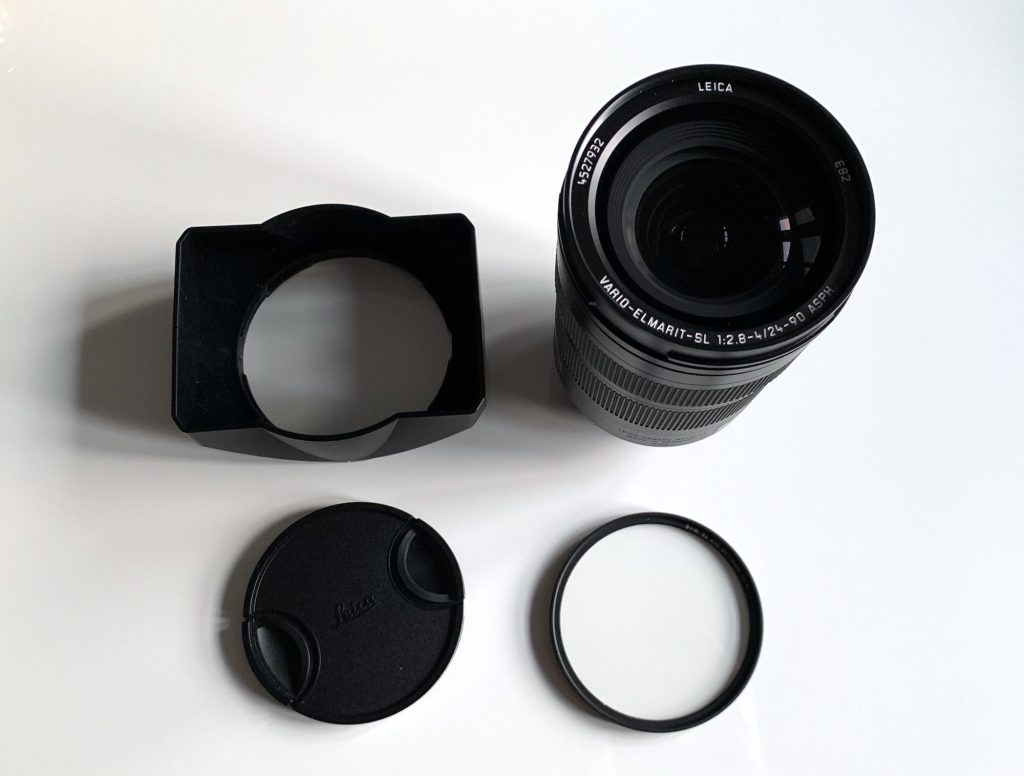
The SL2 also has 5-axis in-body image stabilisation (a first for any Leica camera), which increases the performance with this lens even more (and more drastically also for unstabilised lenses such as literally all M- or R-lenses). I am deeply impressed with everything about his lens and the same goes for some other SL lenses I tried (such as Leica APO-Summicron-SL 2/35 ASPH, Leica Summilux 1.4/50 ASPH or Leica APO-Summicron-SL 2/90 ASPH).
They all are of exceptional build quality and meet highest expectations on image quality. There were some issues with the autofocus of the 1.4/50, but a firmware update seem to have fixed that. At least I did not have any issues with the lags in the autofocus system and it felt reasonably fast. The most amazing lens for me was the APO-Summicron-SL 2/35, the most compact SL lens I tried. The autofocus seemed to be the best by far and the shallow depth of field and super high contrast felt more like on much faster lenses. It is an amazing achievement.
Adapters
Yet, the SL lenses are heavy and bulky, which might not be an issue for many but for me was a struggle to get used to. As I like to have the camera with me at all times, carrying around a huge kit comes at certain disadvantages and I will get back to this point later. Luckily, with some adapters it was quite easy to use more compact lenses on the SL.With those the SL did not feel like a large camera anymore. Despite lacking the unparalleled looks of the M10, the SL can be used as a compact system if needed.
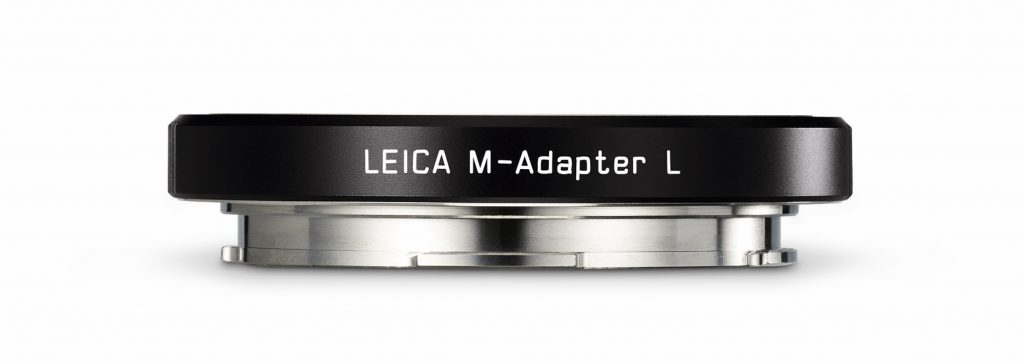
I used both M-lenses with the Leica M-Adapter L and some vintage R-lenses I still have with a Novoflex R-mount adapter. There is also an R-Adapter L from Leica, but I didn’t want to justify the investment for just trying out some old R-lenses. I was impressed how well the R-lenses performed on the SL, however. I also used them on the Leica CL some time ago, but as it is crop sensor camera, I could not fully assess the performance of the lenses. With the full frame SL they shined just as they used on my R8 and it was nice to use them again. Their look seemed quite unique to me, but this could just be nostalgia. Considering that R-lenses are easy to get and are priced no where close to M-lenses, this can also be an affordable entry in to the Leica ecosystem.
In addition to my daily go to Leica M Summicron 2/50 lens, the sharpest Leica lens I know and basically a reference standard in lens performance, I also used a Voigtländer 1.4/35 MC Nokton Classic on the SL, which really is an amazing lens for the considerably lower price compared to Leica Summilux lenses.
Customisable Controls
In combination with the amazing EVF and the SL’s joystick button on the back, the M-lenses were super easy to focus and the few settings I might need to adjust things on the fly could be set to any of the completely customisable buttons on the rear of the camera. Sadly, for the SL2, Leica chose to use the same button layout as on the M10 and Q2. Although I think it is a smart choice to homogenise the back panels of Leica cameras across all high end systems, I really enjoyed the customisable approach of the Leica SL and think it was a smart move in comparison to almost all other professional camera systems with hard to use back panels and super complex menu systems.
The new standardised button layout still is much simpler than any other manufacture’s approach, yet the number of customisable buttons is considerably smaller. This might not make a lot of difference on an all manual M camera, yet on the full featured SL2 there are few more things that might require on the fly adjustments, starting from autofocus and ranging to video settings for the best in class video recording specs the SL or SL2 system offers.
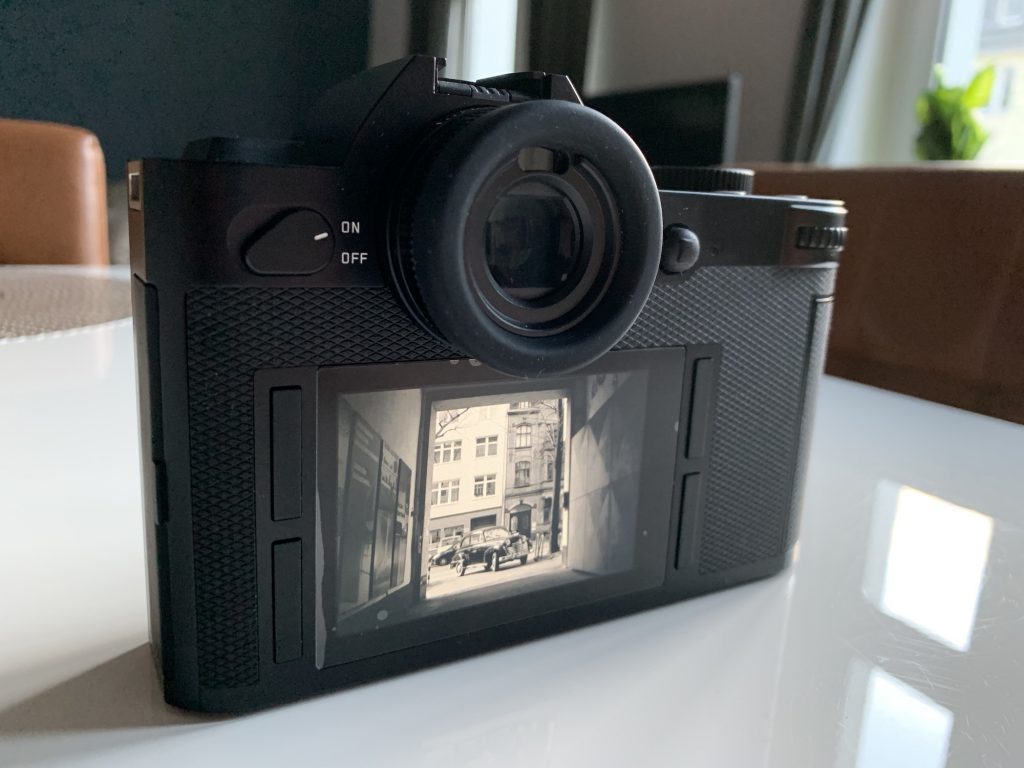
A Tool for Work
I used the Leica SL for anything from reportage and street shooting up to event photography and portraits. The camera never failed me. It can be used in heavy rain, at low temperatures and even in salt water on the beach, catching the waves. The battery life could be better, but I never needed more than 2 full batteries in one day. Battery swaps are easy to do one handedly with the nice built in mechanism that ensures batteries don’t fall out of the battery compartment once the battery release is trigged.
Overall, it felt like the most thought through and most professional camera system I have used so far and I would chose it over any high end system from Sony, Nikon or Canon any day. It is the ultimate workhorse and even though I never used it for any serious video shooting, the SL and even more so the SL2 are certainly high end systems also in this regard with 4K on the SL and even 5K Cine modes on the SL2.
I would recommend the SL system to anyone that is looking for an alternative to bulky DSLR setups but still wants all the bells and whistles. It is also a great way to enter the Leica ecosystem as it supports all kinds of lenses through affordable adapters. With the SL2 certainly addressing some minor issues with the SL (e.g. higher resolution, in-body image stabilisation, improved grip etc.), I think that especially for low light shooters, the SL is still an amazing choice in 2020 that is actually quite affordable.
Yet…
For me personally, the use of autofocus lenses became rarer and rarer over time. Even though everything about the SL lenses is amazing, I only used the SL-lenses whenever I had very specific need for their advantages over manual focus lenses. The main issue for me was the size and weight of the overall system as a day to day camera. The SL body weighs 847 g (1.87 lb) and the 24-90 zoom lens adds another 1140 g (2.51 lb). Other SL lenses are more or less the same, with the fixed focal length lenses being slightly lighter. All in all, this might not be super much compared to DSLR systems, but for carrying the camera around the neck all day, 2kg is just too much for my taste.
A Leica M10-P comes in at just 660 g (1.46 lb) and a small and compact manual focus lens like the Leica M-Summicron 2/50 weights just 240 g (0.53 lb). So in comparison, the SL body itself might not be that much heavier than the compact rangefinder camera, yet with an autofocus SL lens, it really is on another magnitude of burden to carry around.

The weight might be no issue for most, but for me it really became critical. With the aspiration to always wear a camera, a heavy kit results in it being left behind and this is exactly what happened more often than I would like. I think if the approach would have been to not get any SL-lenses and just use compact manual lenses on the system, it might have worked out. But with some if the bulky lenses in the arsenal, it felt like I am not using the system the way it is intended.
Next Step
So, as a result I will part ways with the Leica SL and even though it was an amazing experience, I am heading towards where I have already been and always knew I would end up, the Leica M System. Considering all the effort it took to reach this conclusion, I could have probably skipped the journey of exploring systems X, Q, CL and SL and should have gone to the destination right away as rangefinder photography is what resonates best with me.
However, this way I really immersed into the Leica ecosystem and feel that I explored the limits of their systems to challenge and reflect on what I am really looking for in a camera. As nothing draws me into the certainly amazing S-system for medium format photography with the recently announced S3 camera, it seems clear where to go now.
So, next step: Closing the circle with the Leica M 10-P.
Related
2 Comments
Leave a comment Cancel reply
This site uses Akismet to reduce spam. Learn how your comment data is processed.



[…] recently reported on my experience with the Leica SL Typ 601 and its relevance in 2020 after the release of the SL2 in late 2019. A revised version of the […]
[…] finally deciding to go for the LEICA M10-P White Edition, I was a passionate LEICA SL Typ 601 user. Apart from my personal reservations in regard to size and weight, it was straight out the […]